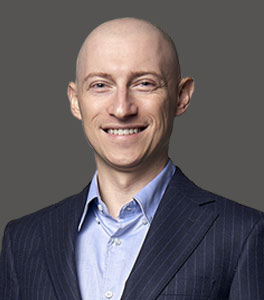

Nose reconstruction is a complex reconstructive procedure that must embody both functions and form for excellent results. Dr. Gary Linkov at City Facial Plastics in New York is a respected reconstructive and facial plastic surgeon who has spent years helping those with facial trauma recover the function and form of their facial features, including the nose.


City Facial Plastic in Midtown, Manhattan uses advanced techniques and cutting-edge medical technology, enabling to restore the function of the nasal passages and ensure the balance and aesthetics of the nose appearance.
Nasal reconstruction involves restoring areas that have been damaged or removed.
A few basic principles guide the surgeon in performing nose reconstruction surgery, including:
The nose is a complex structure made of many components. It serves an important role in the way we look and is responsible for nasal breathing. There are times when the nose is damaged and needs to be repaired. Reconstruction of the nose may be necessary after a trauma, removal of cancer, or a congenital defect. Nasal reconstruction has become more elegant with better breathing and appearance results over the past few decades.
A blunt force trauma to the nose during a motor vehicle accident, sports injury or other incidents can leave the nasal passages collapsed and the nose disfigured. In some cases, the nose is damaged due to surgical removal of skin cancer or other medical procedures. Dr. Linkov is the best-rated Manhattan plastic surgeon who can restore lost cartilage and skin to rebuild the shape of the nose. His goal is always to allow for proper function while retaining a pleasing appearance to the nose and facial balance.
All cosmetic nose alterations require extensive expertise, whether it is an aesthetic nose job or due to trauma. To ensure you receive the best care for both nasal form and function, you can trust Dr. Linkov for superior results if you need nasal reconstructive surgery.
There are various indications for nose reconstruction, such as:
The nose consists of three main structural components relevant to reconstruction. These include:
As per one of the central principles explained above, it is important to replace all missing layers with its analogous tissue.
Knowing the nine nasal aesthetic units also helps in planning a nasal reconstruction. These include:
As a general rule, if at least 50% of a subunit is affected then the remainder of that subunit is removed and the entire subunit reconstructed. This is done to create the ideal aesthetic outcome and a nasal appearance that does not draw attention to it.
There are different options available to the surgeon for nasal reconstruction. These depend on surgical skill set, surgeon preference, size and extent of defect, and patient preference and medical condition. The majority of plastic surgery nose reconstructions are done under general anesthesia but can be performed under local anesthesia or deep sedation in certain instances.
The general categories of plastic surgery nose reconstruction options include:
The recovery after nasal reconstruction surgery will depend on the exact type of reconstruction employed. Swelling, bruising, light bleeding, and pain can be expected in the first 1-2 weeks. Patients should apply antibiotic ointment to the incisions and/or bolsters during at least the first week to prevent infection and to keep the incision sites from drying out. At the first follow-up appointment at 1 week postoperatively, the skin sutures are removed (if not dissolvable), and bolsters are removed if they were used.
Larger regional flap reconstructions may require additional staged procedures and patients may experience difficulty breathing through the nose and/or a cosmetic deformity between procedures. Incisions will appear red for weeks to months and the final scar is judged at one year. Scar revision is possible, at least 3 months after nasal reconstructive surgery, and laser resurfacing or dermabrasion may be started as early as 6 weeks after surgery if indicated.
The possible risks of nasal reconstruction include:
Most cases of nasal reconstruction are covered by insurance as they are rarely done for purely cosmetic reasons. However, some patients may not have insurance coverage and some surgeons may not accept in-network insurance. In these situations, a cost that includes the surgeon’s fee, facility fee, and anesthesia fee is calculated based on the complexity of the nasal reconstruction and the number of anticipated stages.
Dr. Gary Linkov is a certified plastic surgeon in New York City specializing in the best nasal reconstruction. Dr. Linkov is the best specialist with extensive experience treating all conditions of the nose. He is the Chief of Otolaryngology and Facial Plastic Surgery for the Veterans Hospital in Brooklyn, NY, where he operates on complex nasal deformities in our country’s veterans. Dr. Linkov’s private practice in Manhattan’s Upper East Side focuses on nasal reconstruction, as well as cosmetic and functional rhinoplasty.
If you have suffered a nose injury that has altered your function and appearance, contact City Facial Plastics in UES, Manhattan. We can schedule a consultation with an internationally recognized facial plastic surgeon Dr. Gary Linkov to discuss options for nasal reconstruction to improve the look and function of your nose after a facial injury.
Dr. Gary is a fantastic NYC plastic surgeon who treats me and to whom I would recommend all my friends and family. He has a very conservative approach to fillers and I was extremely impressed with the way he filled my nasolabial lines that had been bothering me for years. It was painless, and I did not experience any bruising at all. Getting this done gave me so much confidence – I wish I worked with him years ago!
MARINA SHALMAN

Dr. Linkov is a double board-certified by the American Academy of Facial Plastic and Reconstructive Surgery and the American Board of Otolaryngology-Head & Neck Surgery. A native of New York, Dr. Linkov graduated as a salutatorian from Cornell University and received his Medical Degree at Columbia University College of Physicians and Surgeons. Dr. Linkov conducted advanced head and neck cancer research at the world-renowned Memorial Sloan Kettering Cancer Center. Dr. Linkov is a former Adjunct Assistant Professor at New York University (NYU), where he taught Rhinoplasty.
Dr. Linkov is a top-rated facial plastic surgeon in New York who specializes in lip lift, facelift, rhinoplasty, and hair transplant. He has been named one of the top 5 lip lift surgeons in the United States, is listed in the prestigious SuperDoctors New York™ registry, and has appeared on the Dr. Oz Show, where he discussed the state-of-the-art hair transplantation procedure.


City Facial Plastics 150 E 56th St, #1AB, New York, NY 10022 (212) 439-5177